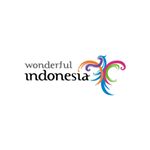Next to Yogyakarta, Solo, and Pekalongan, the other center of exquisite Indonesian batik art is found in the city of Cirebon on the northern coast of West Java Province. However, the term ‘Batik Cirebon’ may not be familiar to many since most people usually refer to it as ‘Batik Trusmi’. This is because it is at the village of Trusmi, situated some 4 KM west of the city center, that is the heart of Cirebon’s Batik production and it is here where you will find the best of Cirebon’s distinct batik materials and art.
At Trusmi Village, there are over 1,000 batik artisans who work daily to produce these fine masterpieces. These are not just the villagers from Trusmi itself but also those from nearby areas such from Gamel, Kaliwulu, Wotgali, and Kalitengah. Here, along the 1.5KM main road, you will find rows of Batik Trusmi stores and showrooms lining up the streets showcasing their finest products. Nowadays, keeping up with cyber trends, there are also stores that sell Batik Trusmi online.

Unlike other Batik-producing areas like Solo that mainly features one distinct style of Batik Keraton (Royal Batik) or Pekalongan that focuses on Batik Pesisir (Coastal Batik), Cirebon features both styles of batik. Similar to those of Yogyakarta or Solo, Cirebon’s classic royal batik styles have here also been developed by the royal palaces (the Kasepuhan and the Kanoman Sultanates), while the coastal batik itself emerged from trade and fishing communities who brought their own motifs and style. Royal batik is characterized by motifs of royal symbols based on religious philosophy, while the coastal batiks are more dynamic and open to current trends.
In general, the ornaments of Cirebon’s batik can be classified into 5 groups: Wadasan, Geometric, Pangkaan (Buketan), Byur, and Semarangan.
Wadasan is the classic ornament of Cirebon batik that mainly highlights the royal batik style. The motifs of Wadasan are among the most renowned of Batik Trusmi that include the Mega Mendung (Clouds), Singa Payung (lion covered by umbrella), Naga Saba (dragon), and Taman Arum, which motifs are largely influenced by Chinese empirial designs. Among the geometric motifs are: Tambal Sewu, Liris, Kawung, and Lengko-lengko. As the names suggest, the geometric ornaments mainly feature lines and geometric shapes.

The Pangkaan or also known as Bungketan ornaments feature floral variations such as trees or flowers. Motifs included in this ornaments are Pring Sedapur, Kelapa Setundun, Soko Cina, and Kembang Terompet. The Byur is highlighted with flowers and small leaves that completely fill the textile with motifs such as Karang Jahe, mawar Sepasang, Dara Tarung, and Banyak Angrum. The Semarangan Ornament features repetitive motifs placed in certain patterns. The motifs of these ornaments are called Piring Selampad, Kembang Kantil, and more.

The history of Batik at Trusmi Village is believed to have been initiated by an Islamic religious leader by the name of Ki GedeTrusmi who was a loyal follower of Sunan Gunung Jati (one of the Wali Songo or the 9 Guardians of Islam who first spread Islam on Java Island). KI GedeTrusmi is said to have been the one who taught the people the art of batik while spreading Islam across the region. Besides being immortalized through the name of the village, Ki GedeTrusmi today remains very highly honored by the local inhabitants. His tomb is well preserved and every 4 years, the Trusmi villagers conduct a ritual called Ganti Welit and Ganti Sirap (changing the roof of the tomb).


















